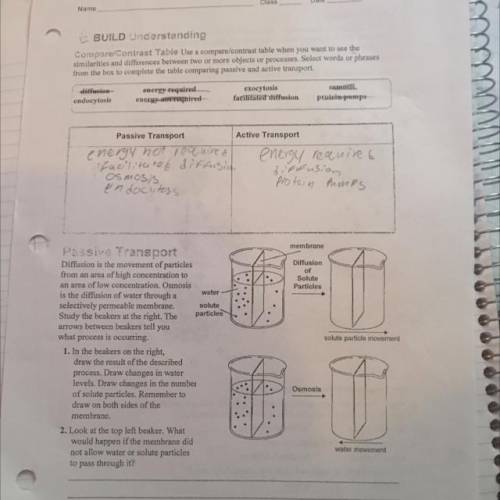Membrane
Diffusion
of
Solute
Particles
solute particle movement
Passi...

Biology, 10.12.2020 22:30, yourgirlnevaeh
Membrane
Diffusion
of
Solute
Particles
solute particle movement
Passive Transport
Dillusion is the movement of particles
from an area of high concentration to
an area of low concentration. Osmosis
is the diffusion of water through a
water
selectively permeable membrane. solute
Study the beakers at the right. The
particles
arrows between beakers tell you
what process is occurring.
1. In the beakers on the right,
draw the result of the described
process. Draw changes in water
levels. Draw changes in the number
of solute particles. Remember to
draw on both sides of the
membrane
2. Look at the top left beaker. What
would happen if the membrane did
not allow water or solute particles
to pass through it?
Osmosis
water movement
I’m so confused please help


Answers: 1
Other questions on the subject: Biology

Biology, 22.06.2019 01:00, AdoNice
The allele for curly hair is incompletely dominant. if a mother is homozygous for curly hair and the father is homozygous for straight hair, what percentage of the offspring will exhibit characteristics of both parents? 25 percent 50 percent 75 percent 100 percent
Answers: 2


Biology, 22.06.2019 07:00, doris8051
What was the purpose of mendel's experiments with dihybrid crosses? a. to determine if dna was a transforming factor b. to determine if traits could be recessive c. to determine if traits affected each other d. to determine if traits had more than one allele
Answers: 3
Do you know the correct answer?
Questions in other subjects:


Chemistry, 01.07.2020 15:01


Physics, 01.07.2020 15:01


Mathematics, 01.07.2020 15:01









